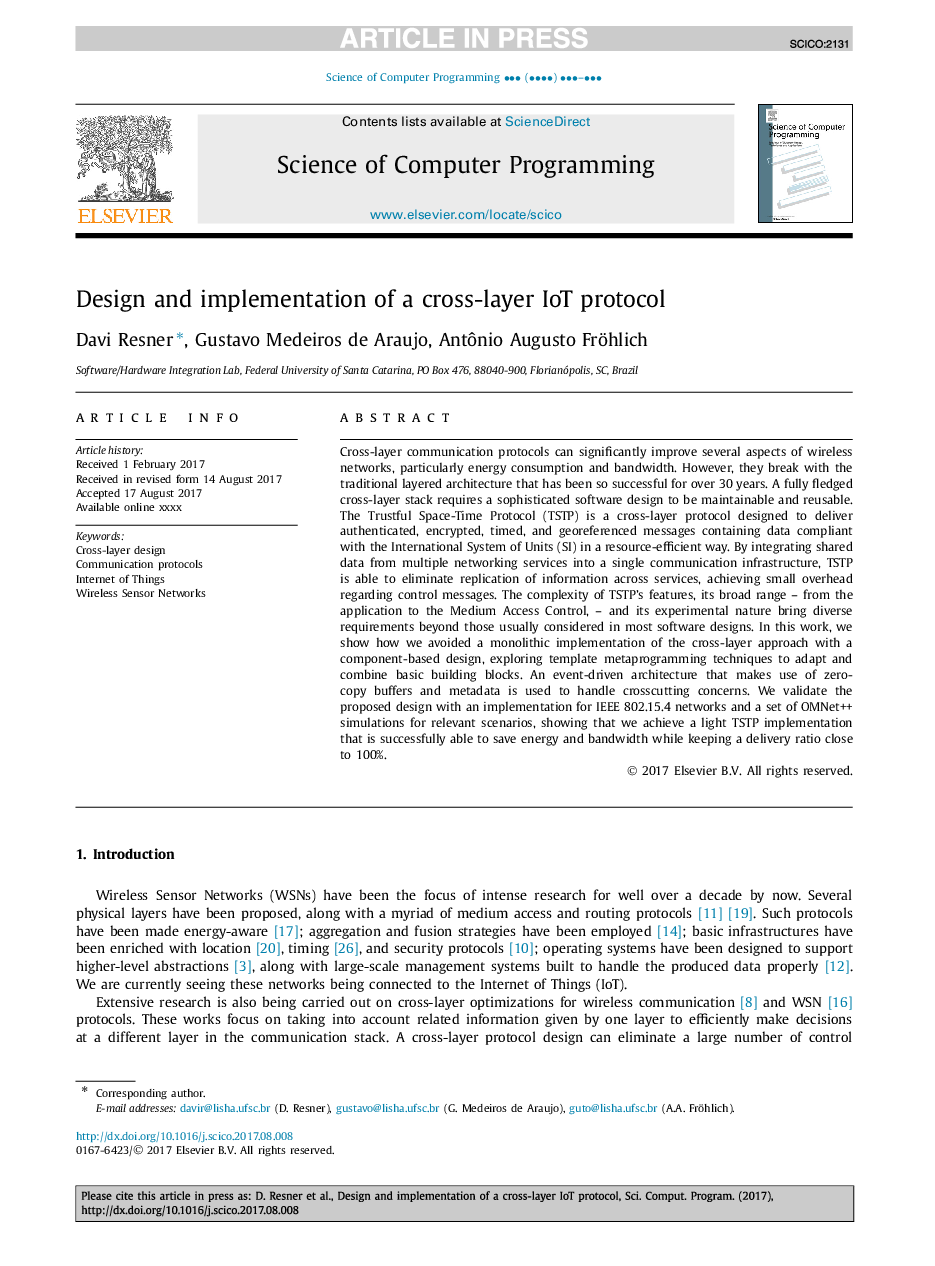| Article ID | Journal | Published Year | Pages | File Type |
|---|---|---|---|---|
| 8960175 | Science of Computer Programming | 2018 | 14 Pages |
Abstract
Cross-layer communication protocols can significantly improve several aspects of wireless networks, particularly energy consumption and bandwidth. However, they break with the traditional layered architecture that has been so successful for over 30 years. A fully fledged cross-layer stack requires a sophisticated software design to be maintainable and reusable. The Trustful Space-Time Protocol (TSTP) is a cross-layer protocol designed to deliver authenticated, encrypted, timed, and georeferenced messages containing data compliant with the International System of Units (SI) in a resource-efficient way. By integrating shared data from multiple networking services into a single communication infrastructure, TSTP is able to eliminate replication of information across services, achieving small overhead regarding control messages. The complexity of TSTP's features, its broad range - from the application to the Medium Access Control, - and its experimental nature bring diverse requirements beyond those usually considered in most software designs. In this work, we show how we avoided a monolithic implementation of the cross-layer approach with a component-based design, exploring template metaprogramming techniques to adapt and combine basic building blocks. An event-driven architecture that makes use of zero-copy buffers and metadata is used to handle crosscutting concerns. We validate the proposed design with an implementation for IEEE 802.15.4 networks and a set of OMNet++ simulations for relevant scenarios, showing that we achieve a light TSTP implementation that is successfully able to save energy and bandwidth while keeping a delivery ratio close to 100%.
Related Topics
Physical Sciences and Engineering
Computer Science
Computational Theory and Mathematics
Authors
Davi Resner, Gustavo Medeiros de Araujo, Antônio Augusto Fröhlich,
